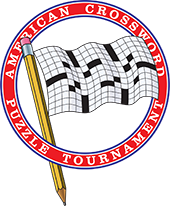Never a cross word
Source: Savannah Morning NewsDate: August 20, 2005
Byline: Theo Lippman Jr.
Never a cross word
Author takes readers to the crossroads of crossword puzzles
A Review By Theo Lippman Jr. For the Savannah Morning News
The subtitle of the interesting, readable and occasionally quirky "Crossworld" is "One Man's Journey into America's Crossword Obsession." Crossword puzzle solving attracts around 60 million Americans, the author says.
It's an educated guess, but there's a lot of evidence that puzzlers are very numerous — and passionate about their pastime. When my old paper, the Baltimore Sun, decided last year to drop one of its two daily crosswords in a redesign, several thousand readers threatened to stop taking the paper, forcing it to reinstate the dropped feature.
Romano tells an even more telling anecdote: The Boston Globe inadvertently dropped its daily puzzle one day, "and received forty thousand letters of complaint."
Romano's book is a combination of autobiography, personality profiles of the best puzzle solvers, and history. The book deals with two recent annual American Crossword Puzzle Tournaments in Stamford, Conn. He was there as a participant and a reporter on assignment for the Globe.
There have been word games for almost as long as there have been words. But it wasn't until 1913 that the crossword puzzle as we know it was created. It first appeared in New York, when Arthur Wynn, a newspaper editor of his paper's "Fun Page," began putting his own creation there.
Other papers followed suit, particularly after Simon & Schuster published a book of crossword puzzles in the 1920s, which proved to be extremely popular with the public.
Soon almost every newspaper and several book publishers got into the game. American-style puzzles showed up in other countries. The crossword puzzle became "the most singularly popular word game in history and an absolute financial windfall for publishers in every nation in the world," Romano writes. "Unfortunately for Wynn, he never patented the idea."
To give you an idea of puzzles as windfalls, consider that Romano calculates that the New York Times puzzle "probably adds a hundred thousand newsstand sales of the paper per weekday and maybe two hundred thousand every Sunday."
Even if he exaggerates by 100 percent, consider the extra circulation income and resulting increased ad rates.
If you consider yourself a crackerjack puzzle solver, you may be intimidated by this book. I was. I work 19 quality puzzles a week, in ink, sometimes at a speed that impresses family and friends. But the tournament crowd would deride me. Romano says he works the Times Monday crossword in three to five minutes; the best solvers do it in two-and-a-half minutes.
How fast is that? Take the typical puzzle's 15x15 grid and fill in as fast as you can every white square with an "e" — one of the quicker letters to scribble. Just that will probably take you about two minutes.
Monday's puzzles are relatively easy. Times puzzle editor Will Shortz makes the crosswords more difficult each day. The daily puzzles can send many good solvers to a peek in the dictionary on Friday and Saturday (when no one is looking, of course).
Shortz came to the Times in the early 1990s, and his progressive scheduling has caught on with many newspapers and syndicates that furnish puzzles to papers large and small, dailies and weeklies. He has been involved in puzzles since the 1970s. He started the American Crossword Puzzle Tournament in 1978 and still directs it.
Warp speed solvers may seem to be the stars of the crossword world, but "puzzle constructors are the creme de la creme," Romano writes. Some fast solvers are also good constructors. Trip Payne, who makes a living constructing, has won the Tournament three times, twice while a resident of Georgia.
But some of the best constructors do not compete. Gayle Dean, now living in Jacksonville, who still frequents Savannah, her old hometown, is one. Her puzzles have appeared in the New York Times, the Washington Post and many other newspapers, including the Morning News via Tribune Media, and in magazines and books.
Her best known work is a Times puzzle Shortz calls "a beauty" and "a feat of construction." The letter "e" is not only a quick scribble; it is also the commonest letter in the English language. You can hardly write a sentence without one. Dean's puzzle did not use a single "e" in either the answers or the clues!
Theo Lippman Jr. is a former Morning News reporter who divides his time between Fenwick Island, Del., and St. Simons Island.

